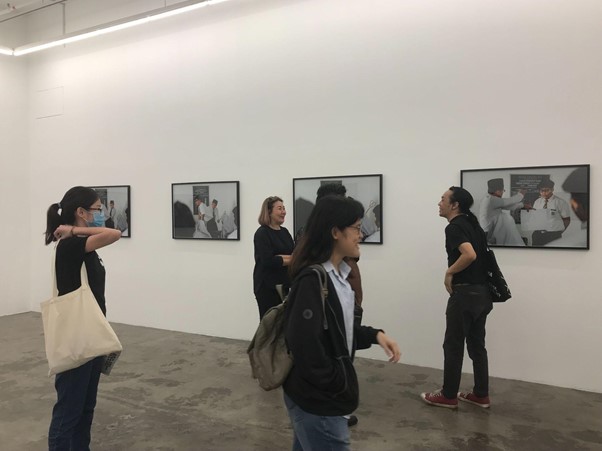Solo exhibitions are significant stepping stones in your artistic career, but how to go about one can be overwhelming. Read on to get some practical tips on how to organise your first solo exhibition.
By Lienne Loy
After participating in several group exhibitions and gaining self-confidence as an artist, you now feel ready to take the step forward toward your own solo —but you’re not sure where to start.
Having a solo exhibition is every bit as daunting as it is exciting. It’s an accomplishment that could grow your network of collectors and peers, and possibly introduce you to new opportunities.
Being a curator and space manager myself, I’ve learned that a solo exhibition is one of the ways for artists to establish themselves in the industry. However, an impactful solo requires a considerable amount of planning.
What should an artist who is putting on their first solo prepare or be aware of?
A solo exhibition shouldn’t be rushed and should be seen as an opportune moment to connect.
You should already have an existing practice
Great bodies of work take time and often grow in depth over many iterations.
Having an informed practice and a developing body of work that depicts concepts you’ve been exploring, ensures that your work is thought-through and intentional, and not just made to meet a deadline.
Solo exhibitions are ways of connecting with the public and widening your social network
More than an introduction of yourself and your practice, consider having a solo as a way to share your most recent explorations and findings. Reflect on how the main themes of your work relate to the present socio-political landscape around you, so that they are relevant and easily accessible to the public.
This is your moment to share your message with the full attention of the audience.
Solo exhibitions are significant and require planning
- Be prepared to put in the hours into a solo that you put together yourself.
- Be prepared for negotiations and discussions with your gallerist, if you’re represented by one.
What are the things that should be prepared in advance that will help ease the way?
Planning your exhibition will help you avoid any issues that arise in the future.
Exhibition planning
Determine the goals of your solo show and its indicators for success. What kinds of outcomes are you hoping for? Is it increased visibility? Or sales? Use these indicators to guide how you approach planning and which areas to prioritise.
Some areas to prioritise could be:
- Funding: Ensuring early on that your show is financially viable and supported will alleviate the stress of future uncertainties. Every space, person, and service involved in the project is a cost.
- Timeline: Keeping track of important tasks will help you navigate your planning with clarity.
- Marketing strategy: Having a game plan on how you present your work to the public will set the tone for the exhibition, and will tie design collaterals and other important elements together.
- Curation: Editing your work selection and writing your statements are all pieces that build up your exhibition’s breadth and depth.
- Inventory: Managing a master list of your works is essential to assuring all of your works are in check.
Who are the key players artists need to work with?
Galleries
Galleries are not only venues—they also have networks of people who can help to develop your show, including curators, designers, and marketing and admin people.
Read more: https://penangartdistrict.com/gallery-representation-what-it-means-and-how-to-find-the-right-fit/

‘Aku Ini Binatang Jalang’, a solo exhibition by Azizan Paiman at A+ Works of Art.
Curators
Curators can help create an overarching framework of your show that is easily digestible to a wider audience. They will also support you in developing your exhibition’s layout and design.
Designers
Designers create and package the visual identity of your show that is then marketed to the public. This might include posters, social media posts, and catalogues.



Screenshots of designs made by Amanda Gayle for art exhibition ‘Buka Buku’ at The Godown. Curated by Lienne Loy.
What are some obstacles artists may come across?
Manpower
Getting extra hands will save you valuable time and energy that can be used elsewhere, however, it may cost you extra.
Funding
Grant funding is highly competitive, so make sure that your application is clear and considerate of the grant’s stakeholders.
Read more: https://penangartdistrict.com/applying-for-art-grants-in-malaysia/
Marketing
This is easily the most important component of every exhibition. A solid marketing plan will ensure that people will know about and visit your exhibition.

Opening night of ‘Aku Ini Binatang Jalang’, a solo exhibition by Azizan Paiman at A+ Works of Art.
Ultimately, preparing and planning for a solo exhibition is a lot of work, but the rewards can be beyond what you think possible. There’s a great deal that you can learn from the process, so jump into it with curiosity and anticipation. Good luck!
Lienne Loy is a curator, event planner and arts programmer currently facilitating events within Kuala Lumpur, focusing on young and emerging talents from the Southeast Asian region.

